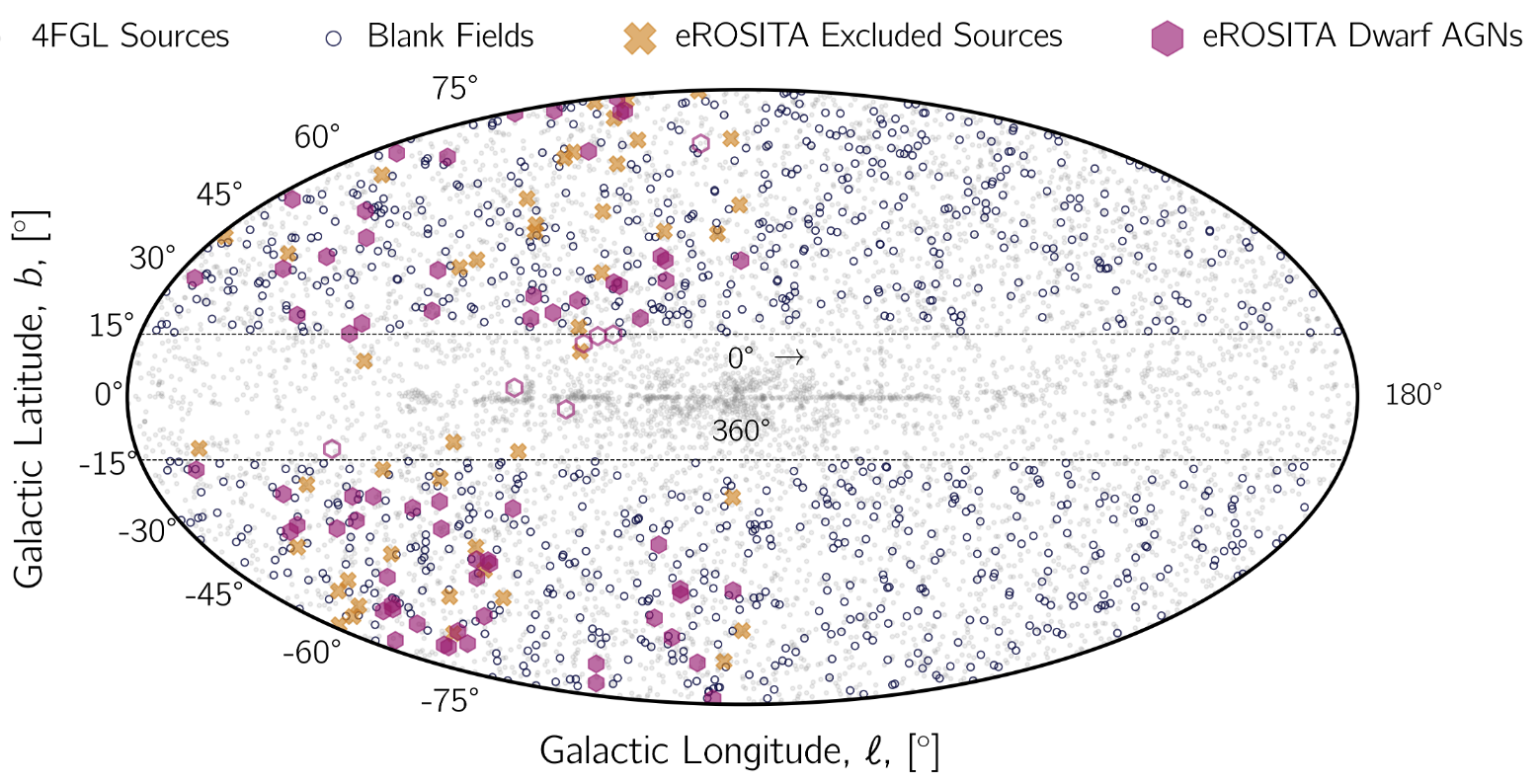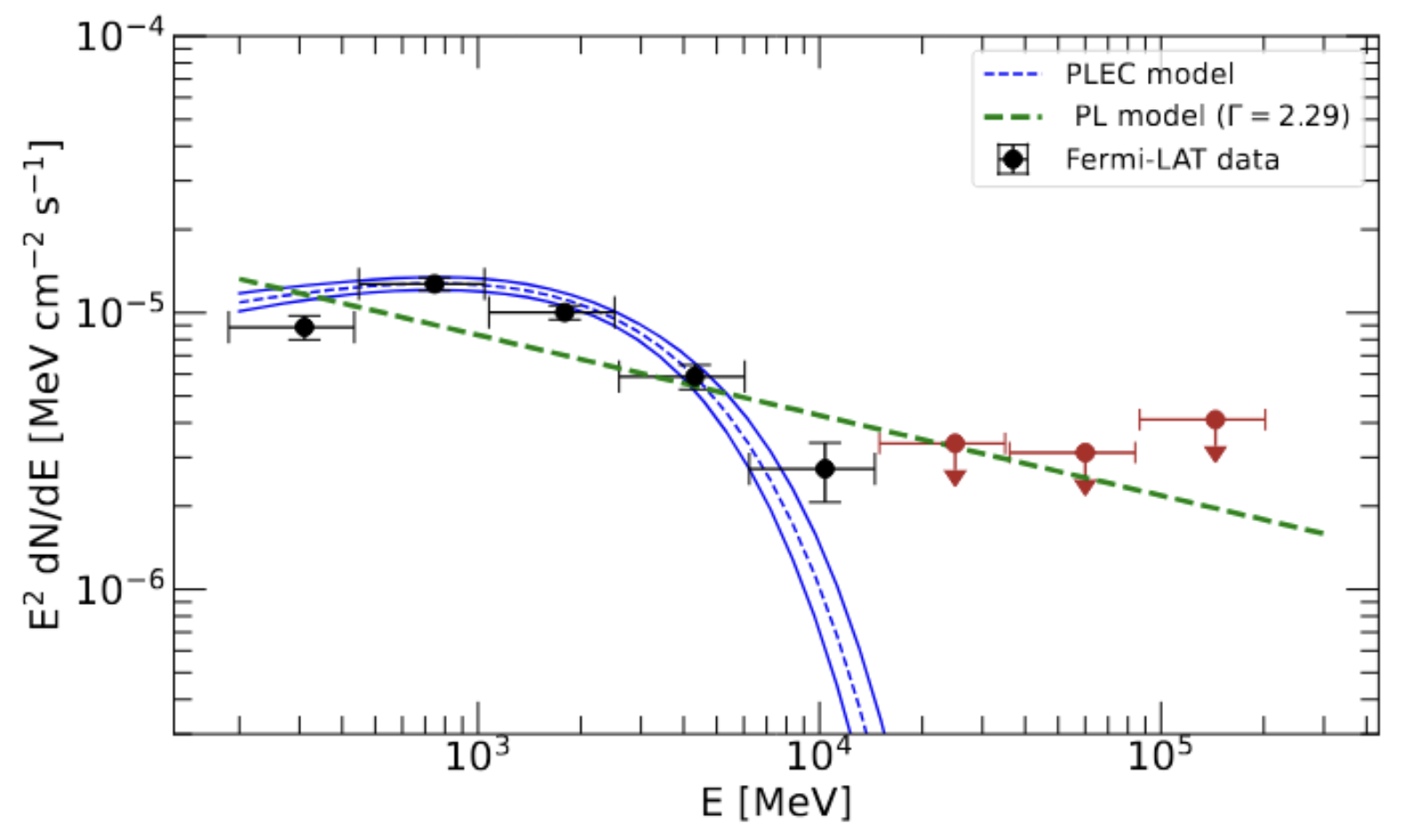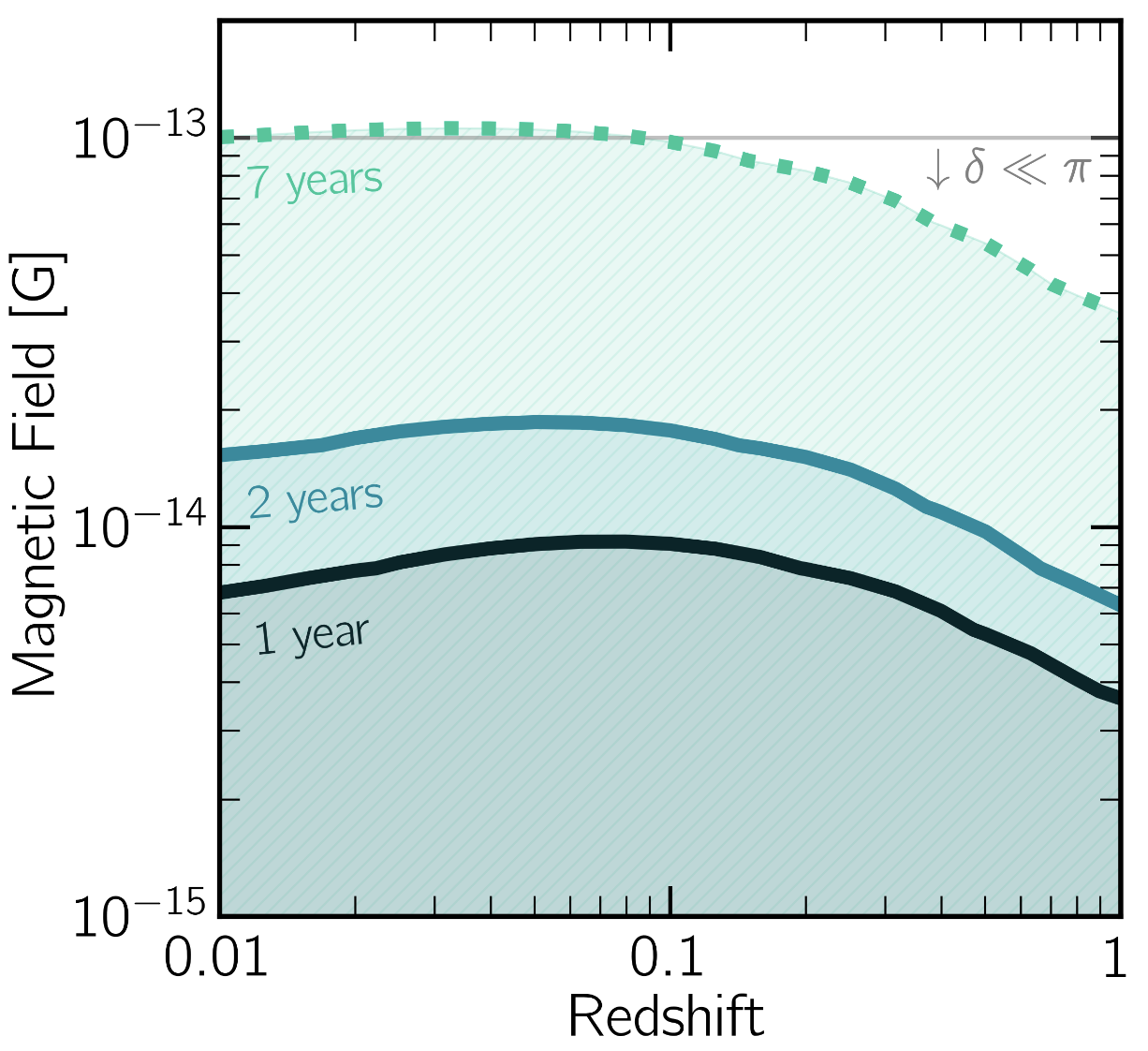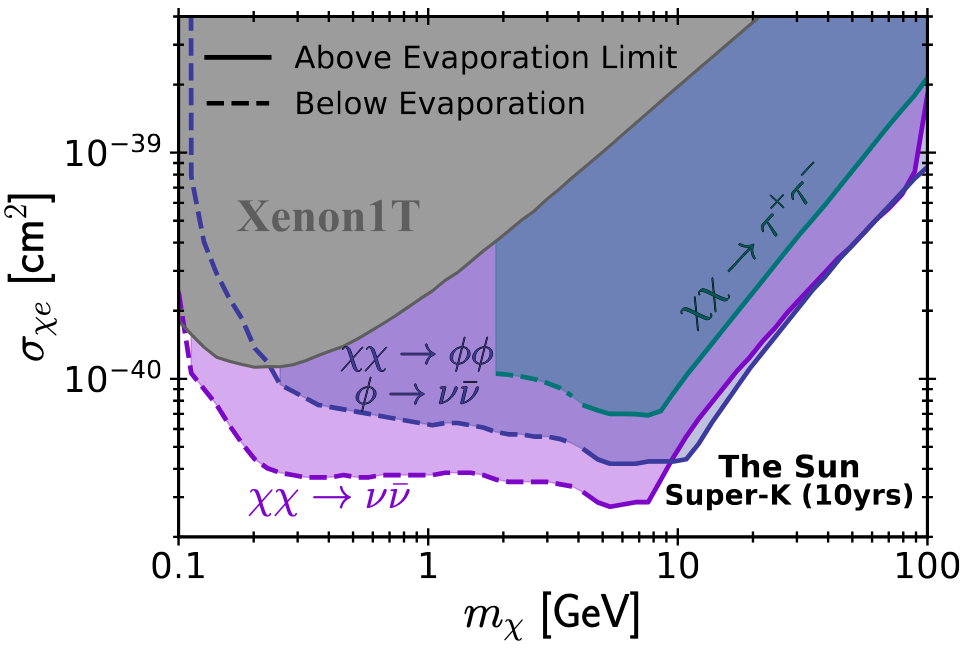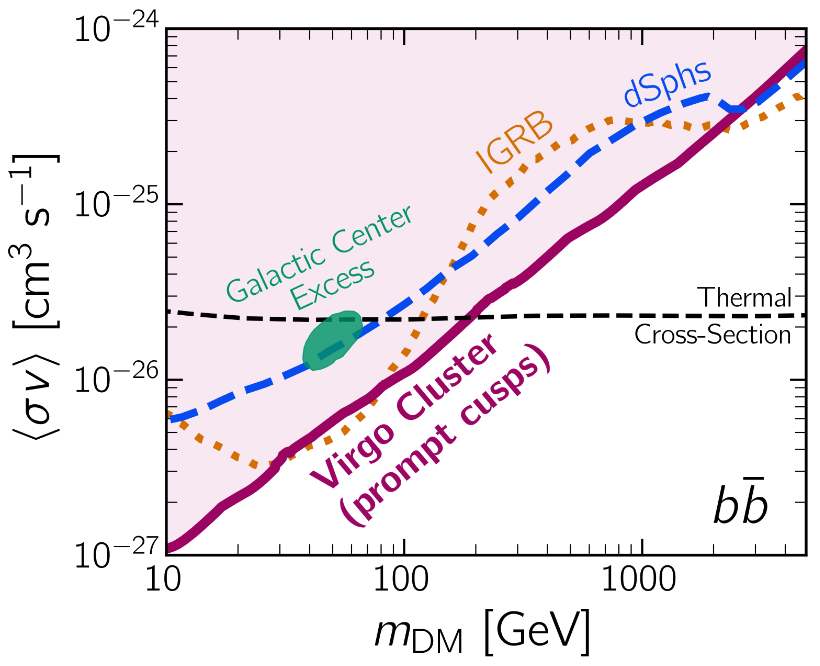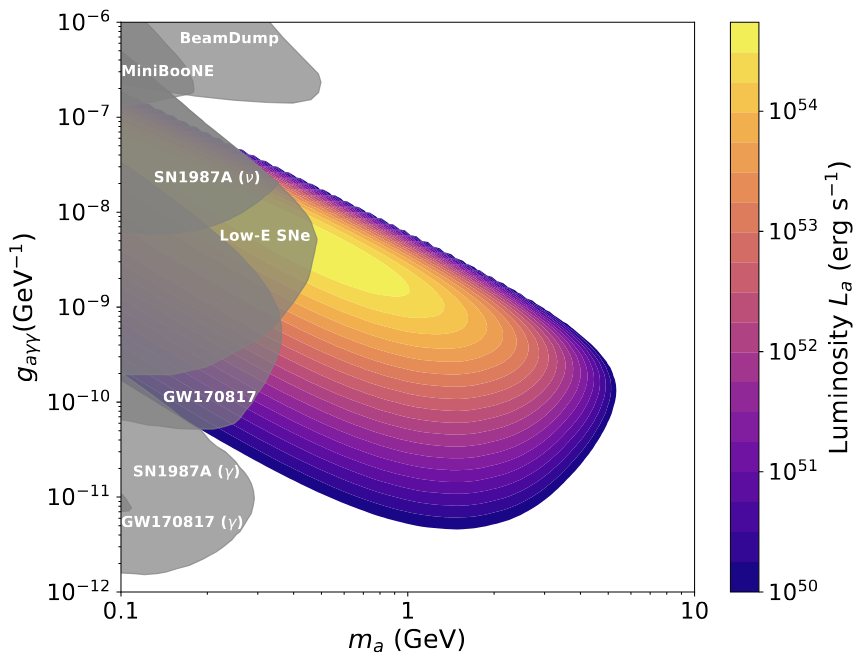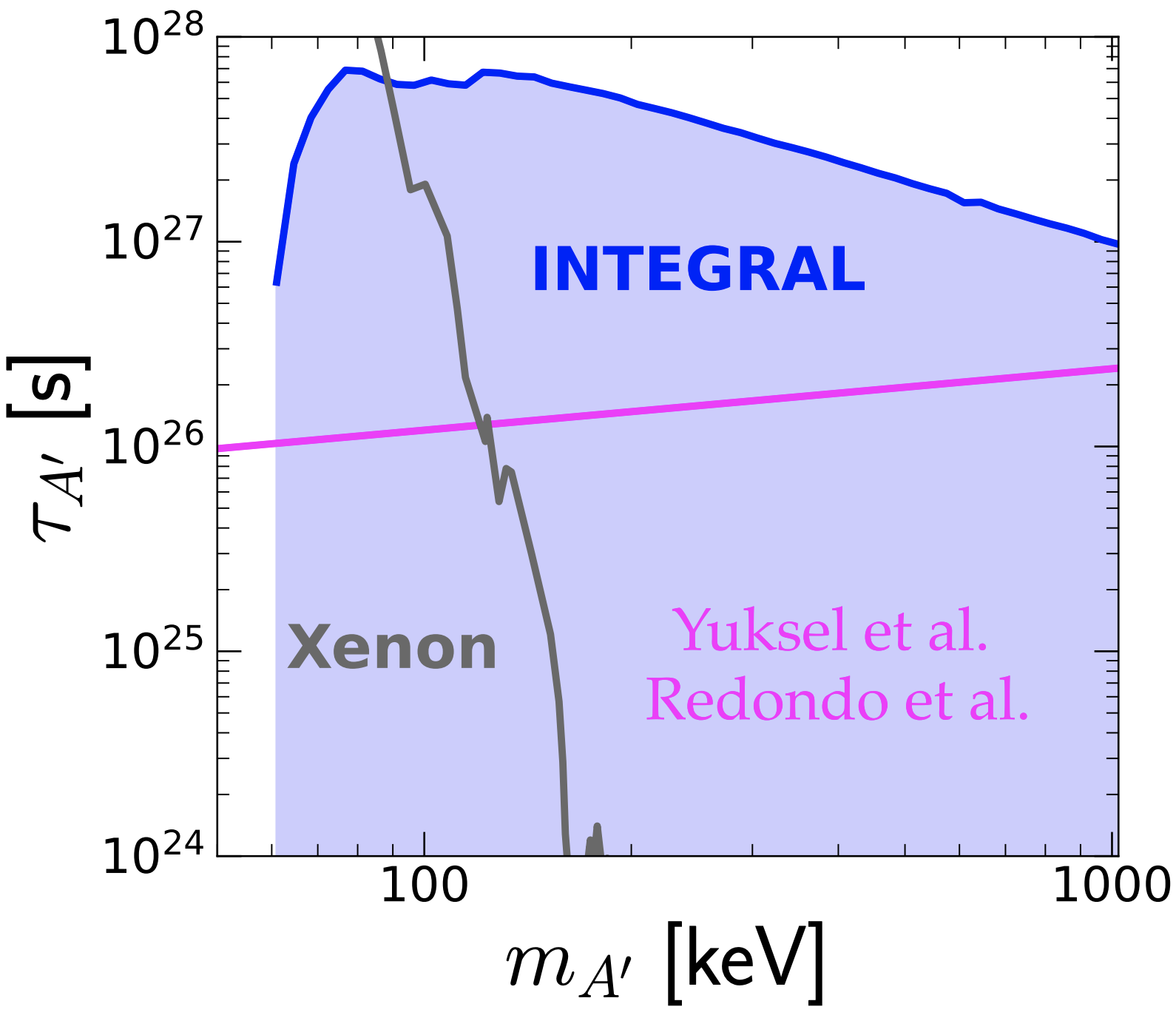32. Are X-Ray Detected Active Galactic Nuclei in Dwarf Galaxies Gamma-Ray Bright?
Milena Crnogorčević, Tim Linden, Annika Peter
To Be Submitted
31. Explosive Dispersal Outflows as a New Class of Fermi Gamma-Ray Sources: The Case of DR21
Paarmita Pandey, Stephen Lenker, Laura Lopez, Anna Rosen, Tim Linden, Todd Thompson, Stellar Offner, Katie Auchettl, Chris Hirata
To Be Submitted
30. Looking for the γ-Ray Cascades of the KM3-230213A Neutrino Source
Milena Crnogorčević, Carlos Blanco, Tim Linden
Journal of Cosmology and Astroparticle Physics 10 (2025) 009
29. Super-Kamiokande Strongly Constrains Leptophilic Dark Matter Capture in the Sun
Thong Nguyen, Tim Linden, Pierluca Carenza, Axel Widmark
To Be Submitted
28. Gamma-Ray Observations of Galaxy Clusters Strongly Constrain Dark Matter Annihilation in Prompt Cusps
Milena Crnogorčević, Sten Delos, Nadia Kuritzén, Tim Linden
To Be Submitted
27. Heavy Axions Can Disrupt Gamma-Ray Bursts
Oindrila Ghosh, Sunniva Jacobsen, Tim Linden
Accepted by PRD
26. X-Ray Constraints on Dark Photon Tridents
Tim Linden, Thong Nguyen, Tim Tait
To Be Submitted
25. Gamma-ray Emission from a Young Star Cluster in the Star-Forming Region RCW 38
Paarmita Pandey, Laura Lopez, Anna Rosen, Todd Thompson, Tim Linden, Ian Blackstone, Lachlan Lancaster
Astrophysical Journal 976 1 98 (2024)
24. Indirect Searches for Dark Photon-Photon Tridents in Celestial Objects
Tim Linden, Thong Nguyen, Tim Tait
To Be Submitted
23. Strong Constraints on Dark Matter Annihilation in Ursa Major III/UNIONS 1
Milena Crnogorčević, Tim Linden
Physical Review D 109 8 083018 (2024)
22. Limits on dark matter annihilation in prompt cusps from the isotropic gamma-ray background
M. Sten Delos, Michael Korsmeier, Axel Widmark, Carlos Blanco, Tim Linden, Simon White
Physical Review D 109 8 083512 (2024)
21. Where are the Cascades from Blazar Jets? An Emerging Tension in the Gamma-Ray Sky
Carlos Blanco, Oindrila Ghosh, Sunniva Jacobsen, Tim Linden
Submitted to PRL
20. Weighing the Local Interstellar Medium using Gamma Rays and Dust
Axel Widmark, Michael Korsmeier, Tim Linden
Physical Review Letters 130 161002 (2023)
19. Gamma-Rays from Star Forming Activity Appear to Outshine Misaligned Active Galactic Nuclei
Carlos Blanco, Tim Linden
Journal of Cosmology and Astroparticle Physics 02 003
18. First Analysis of Jupiter in Gamma Rays and a New Search for Dark Matter
Rebecca Leane, Tim Linden
Physical Review Letters 131 7 071001
17. The Highest Energy HAWC Sources are Leptonic and Powered by Pulsars
Takahiro Sudoh, Tim Linden, Dan Hooper
Journal of Cosmology and Astroparticle Physics 08 (2021) 010
16. Cosmic Rays and Magnetic Fields in the Core and Halo of the Starbust M82: Implications for Galactic Wind Physics
Benjamin Buckman, Tim Linden, Todd Thompson
Monthly Notices of the Royal Astronomical Society 494 2679
15. Evidence for Cosmic-Ray Escape in the Small Magellanic Cloud using Fermi Gamma-rays
Laura Lopez, Katie Auchettl, Tim Linden, Alberto Bolatto, Todd Thompson, Enrico Ramirez-Ruiz
The Astrophysical Journal 867 44
14. Pulsar TeV Halos Explain the TeV Excess Observed by Milagro
Tim Linden, Ben Buckman
Physical Review Letters 120 121101
13. IceCube and HAWC Constraints on Very-High-Energy Emission from the Fermi Bubbles
Ke Fang, Meng Su, Tim Linden, Kohta Murase
Physical Review D 96 123007
12. Star-Forming Galaxies Significantly Contribute to the Isotropic Gamma-Ray Background
Tim Linden
Physical Review D 96 083001
11. The Gamma-Ray Pulsar Population of Globular Clusters: Implications for the GeV Excess
Dan Hooper, Tim Linden
Journal of Cosmology and Astroparticle Physics 1608 08 018
10. Improved Cosmic-Ray Injection Models and the Galactic Center Gamma-Ray Excess
Eric Carlson, Tim Linden, Stefano Profumo
Physical Review D 94 063504
9. Putting Things Back Where They Belong: Tracing Cosmic-Ray Injection with H2
Eric Carlson, Tim Linden, Stefano Profumo
Physical Review Letters 117 111101
8. Known Radio Pulsars Do Not Contribute to the Galactic Center Gamma-Ray Excess
Tim Linden
Physical Review D 93 6 063003
7. Challenges in Explaining the Galactic Center Gamma-Ray Excess with Millisecond Pulsars
Ilias Cholis, Dan Hooper, Tim Linden
Journal of Cosmology and Astroparticle Physics, 06 043 (2015)
6. A New Determination of the Spectrum and Luminosity Function of Millisecond Pulsars
Ilias Cholis, Dan Hooper, Tim Linden
Submitted to PRD
5. Exploring the Nature of the GC Gamma-Ray Source with the Cherenkov Telescope Array
Tim Linden, Stefano Profumo
The Astrophysical Journal, 760 23 7
4. The Morphology of Hadronic Emission Models for the Galactic Center
Tim Linden, Elizabeth Lovegrove, Stefano Profumo
The Astrophysical Journal, 753 1 41
3. Anisotropies in the Gamma-Ray Background Measured by the Fermi-LAT
The Fermi-LAT Collaboration: A. Cuoco, Tim Linden, N. Maziotta, J. Siegal-Gaskins, V. Vitale, E. Komatsu
Physical Review D, 85 8 083007
2. The Morphology of Dark Matter Synchrotron Emission with Self-Consistent Diffusion Models
Tim Linden, Stefano Profumo, Brandon Anderson
Physical Review D, 82 6 228 063529
1. Systematic Effects in Extracting a ``Gamma-Ray Haze" from Spatial Templates
Tim Linden, Stefano Profumo
The Astrophysical Journal Letters, 714 2 228
